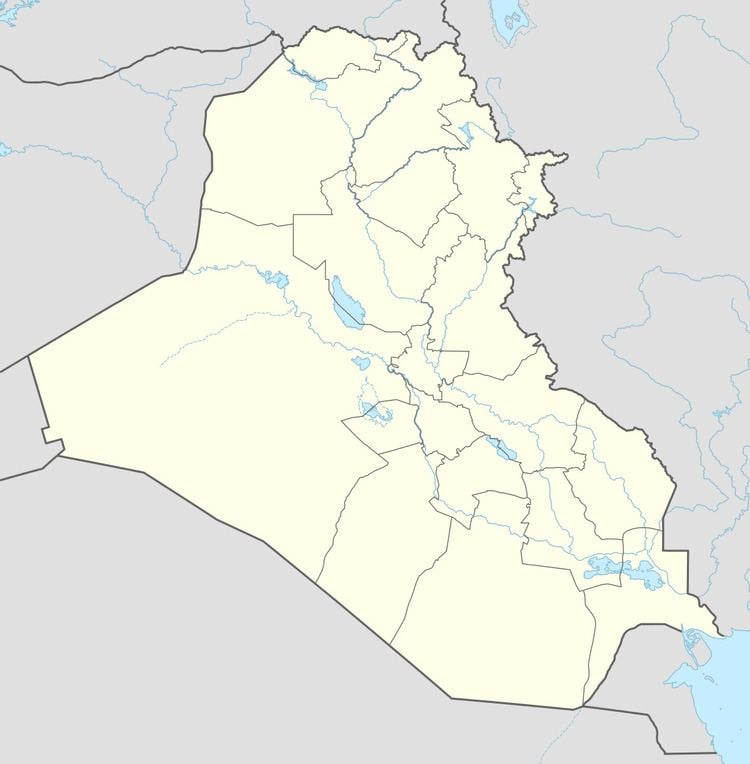Capital Not specified Government Monarchy Historical era Bronze Age | Languages Gutian language c. 2147–2050 BC Inkishush (first) Established c. 2154 BC | |
 | ||
The Gutian dynasty came to power in Mesopotamia in the late 3rd millennium BC, displacing the "Sargonic" dynasty of the Akkadian Empire. It ruled for roughly one century (copies of the Sumerian King List vary between 25 and 4 years). The end of the Gutian period is marked by accession of Ur-Nammu, founder of the "Neo-Sumerian" Third Dynasty of Ur, dated 2112 BC in the Middle Chronology and 2048 BC in the Short Chronology.
Contents
The Gutian people (Guti) were native to Gutium, presumably in the central Zagros Mountains, though almost nothing is known about their origin
History
The Gutians practiced hit-and-run tactics, and would be long gone by the time regular troops could arrive to deal with the situation. Their raids crippled the economy of Sumer. Travel became unsafe, as did work in the fields, resulting in famine.
The Sumerian king list indicates that king Ur-Utu of Uruk was defeated by the barbarian Guti, perhaps around 2150 BC. The Guti swept down, defeated the demoralized Akkadian army, took Akkad, and destroyed it around 2115 BC. However, they did not supplant all of Akkad, as several independent city states remained alongside them, including Lagash, where a local dynasty still thrived and left numerous textual and archaeological remains.
Ultimately Akkad was so thoroughly destroyed that its site is still not known. The Guti proved to be poor rulers. Under their crude rule, prosperity declined. They were too unaccustomed to the complexities of civilization to organize matters properly, particularly in connection with the canal network. This was allowed to sink into disrepair, with famine and death resulting. Thus, a short "dark age" swept over Mesopotamia.
Akkad bore the brunt of this as the center of the Empire, so that it was in Akkad that the Guti established their own center in place of the destroyed Akkad. Some of the Sumerian cities in the south took advantage of the distance and purchased a certain amount of self-government by paying tribute to the new rulers.
Uruk was thus able to develop a 5th dynasty. Even in the city of Akkad itself, a local dynasty was said to have ruled. The best known Sumerian ruler of the Gutian period was the ensi of Lagash, Gudea. Under him, c. 2075 BC (short), Lagash had a golden age.
After a few kings, the Gutian rulers became more cultured. Guti rule lasted only about a century - around 2050 BC, they were expelled from Mesopotamia by the rulers of Uruk and Ur, when Utu-hengal of Uruk defeated Gutian king Tirigan. Utu-hengal's victory revived the political and economic life of southern Sumer.
Weidner Chronicle
1,500 years later, the Weidner Chronicle (ABC 19) accounts for the Gutian period as follows:
"Naram-Sin destroyed the people of Babylon, so twice Marduk summoned the forces of Gutium against him. Marduk gave his kingship to the Gutian force. The Gutians were unhappy people unaware how to revere the gods, ignorant of the right cultic practices. Utu-hengal, the fisherman, caught a fish at the edge of the sea for an offering. That fish should not be offered to another god until it had been offered to Marduk, but the Gutians took the boiled fish from his hand before it was offered, so by his august command, Marduk removed the Gutian force from the rule of his land and gave it to Utu-hengal."List of the Gutian kings
According to the Sumerian kings list, "In the army of Gutium, at first no king was famous; they were their own kings and ruled thus for 3 years." The listed reign durations through much of the Gutian period are comparatively short and uniform (6,6,6,6,5,6,3,3,3,1,3,2,2,1,2,7,7, and 7 years, from Inkishush to Si-um).
Modern connection theories
The historical Gutian people have been regarded by some as among the ancestors of the Kurdish people, who speak Kurdish languages of the Indo-European family.
According to Tamaz V. Gamkrelidze and Vyacheslav V. Ivanov, the Gutian language was close to the Tocharian languages of the Indo-European family.
